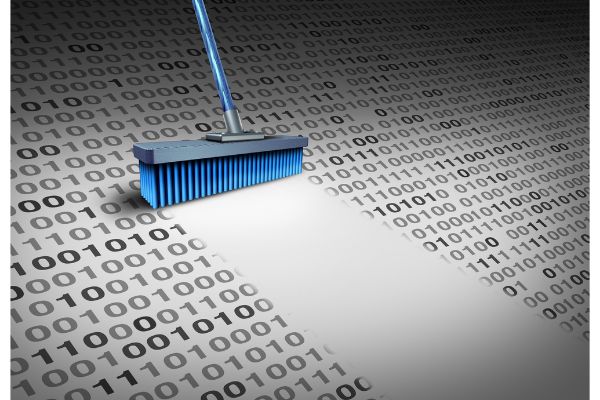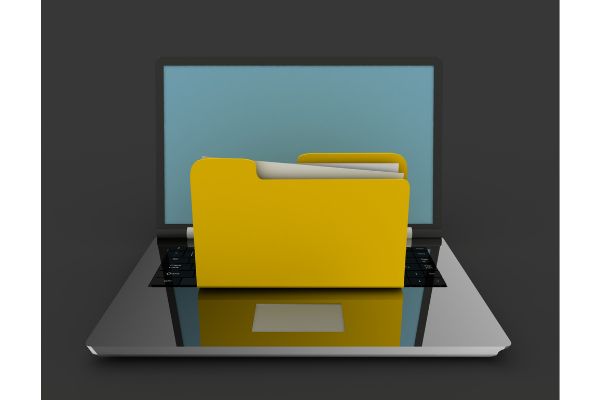Disclaimer: This post may contain affiliate links, meaning we get a small commission if you make a purchase through our links, at no cost to you. For more information, please visit our Disclaimer Page.
Your computer can display quite an array of messages during either its startup or shutdown sequences. Some of these messages do not require much attention from the user, but others are meant to grab one’s attention to avoid any potential problems.
One message that you may have seen on your screen is that the computer is “cleaning up,” and it asks you not to turn the machine off at this time.
We will explain the meanings of this message, when you might encounter issues related to this message, and what you should do when you see it.
Table of Contents
What Does It Mean To “Clean Up a Computer”?
Cleaning up a computer can have various meanings depending on the context. You may have come across fellow users who suggest certain ways of cleaning up your desktop or laptop yourself. In most cases, it is about how to keep internal files, storage space, and the system “clean” and orderly so that it can all run efficiently. There are multiple steps one might take to achieve this.
While cleaning the digital insides of your computer yourself is a good habit to get into, you may not realize that your device also does quite a lot of this, by itself. There are settings you can check to do this at particular times of the day or month, but the computer can also do these things after major changes or alterations that it needs to make to its own system. We’ll be getting into the details of why in a later section of our article.
Mostly, you can think of cleaning up a computer in the same way as you might clean a room or a house. When things are clean and orderly, they tend to run more smoothly. If something is out of place in your computer’s system, that disorder could lead to errors, sluggishness, or other problems that might increase later.
While this isn’t usually going to become a huge deal, it can still negatively affect the overall performance of your machine.
The good news is that cleaning up a computer is very quick and easy these days, and it mostly involves just waiting for the device to go through the motions by itself.
What Does “Cleaning Up” Mean in Windows Update?
Occasionally, you may get a notification in the window on the side of your taskbar that says the operating system has an update for you. ‘Windows Update’ is a tool that provides the OS with changes to how the framework functions, and how the software works, along with various other things.
You may see ‘cumulative updates’ that are bundles of several updates in one. These could address certain bugs, add features, improve performance, and more. This cumulative update style was introduced in Windows 10, but it has since also been backported to earlier versions of Windows.
Once you’ve run a Windows Update and allowed it to do its thing, several things will happen:
1. The system will tell you that it will go through a major update, and it will ask you about any open programs on your desktop. In general, you should save your work and close any open programs before you allow the system to update.
2. Windows Update will tell you that it will be busy for a while, and it will probably say that it is going to restart more than once during the update process. In these cases, it will perform system restarts by itself and ask you not to do anything.
3. Windows Update will say that it is getting your system ready or display similar messaging when it is finishing up the whole process.
4. After that, it may say that it is cleaning up, and please do not turn off your computer at this time.
The cleanup part always happens as part of getting your computer ready, but smaller updates may not display the specific message about not turning off your computer. When you see this message, it is because the system has gone through a larger update.
Bigger updates mean that the system may have created a lot of junk files or otherwise left some remnants of old files in the system behind after the update.
If you see a message about cleaning up after you’ve run Windows Update, it means that the tool is trying to locate and clear outdated or junk files that would otherwise just sit on your computer doing nothing.
In short, it is cleaning house and making things more streamlined by removing things that don’t benefit the system anymore.
Why Does It Say “Do Not Turn Off Your Computer”?
Even if you don’t run Windows Update, you may get a similar message about cleaning up the computer, and it will come with a request not to shut off the device while this process is taking place. Your computer may be set to auto-update outside of what it considers normal hours of operation for you.
If your computer needs to do something significant and needs to be left alone while doing it, it will prefer to get to work at times of the day or night when it thinks you don’t need to use it.
When you see this message, it means that the computer has processed an update or is otherwise cleaning up system files that it doesn’t need. It needs time to do this, and it needs to ensure you know that it isn’t stuck or ready to be shut off completely.
Speaking of active hours, if you want to make sure that your computer stays current but doesn’t bother you with trying to update itself in the middle of your busy schedule, you can change the active update hours to ones that are better suited to your preferences. It is easy to do if you follow these steps:
1. The usual active hours for a system like Windows 10 are during typical business day hours for your region. However, you might work on a different schedule.
2. If you work on a different timeframe, you can alter your system’s active hours. You can find ways to do this right in the system settings.
3. The easiest way to get to the appropriate window is to go to your ‘Start’ menu and type the word ‘hours’ into it. The first result that Windows suggests will be to ‘change active hours.’
4. Click on this option to open the appropriate window in your system. You will see what the current active hours are.
5. You should also see Windows make a recommendation for changing the active hours to times based on when you’ve been using your computer regularly.
6. You may find this suggestion to be accurate, but you can also select the hours you would prefer manually.
7. Doing this will ensure that you can keep your system updated and work without interruption.
How Long Does a Computer Clean Up Take?
The precise answer to this question can depend on your system, its settings, the kinds of files you have stored, how much junk might be on your computer, and how often the operating system has needed to update recently.
However, we can still provide some general knowledge about how long a typical computer cleanup should take under normal circumstances.
What hardware you are running will have some impact on how long the entire process takes. Therefore, the answer will be somewhat different for every user.
There are some possible benchmarks we can set:
1. Cleaning up files from Windows Update will typically take the longest time. These are large files, and the system needs sufficient time to get rid of the stuff that it used during the update but doesn’t need anymore.
2. If your hard disk is full or almost full, any kind of cleanup operation will probably take longer. Precise times would depend on your hardware and its efficiency.
3. Some temporary files could take mere seconds or minutes to clean properly.
4. If it takes more than a day with seemingly no movement in the process, your cleanup could be looping or stuck.
5. In cases where the system might be stuck, you may need to force a restart and figure out what the problem is. However, keep in mind that it is normal for big cleanups to take hours.
What Happens if I Clean Up System Files?
As you might expect from the name, many system files are necessary to help your computer run smoothly and perform its processes without incident.
However, that doesn’t mean that there are never any old system files that you can’t clean up in an effort to have more space or better efficiency. In general, you can use the Disk Cleanup application itself as a good benchmark to know what is safe to delete.
Once Disk Cleanup has run, it will have several categories of files displayed. In most cases, you can delete much of what is there in order to free up space on your hard disk. You may see ‘Windows ESD installation files’ as one category here. These are important files if you ever need to reset your computer for any reason, and we recommend keeping them around.
Some system files are older or no longer used in favor of new ones, but Disk Cleanup itself should be able to find and recommend these for removal. When in doubt, it is better to leave system files alone unless you know your computer won’t use them or notice their absence.
Bottom Line
Some of the messages your computer displays can be confusing. Others can try to stick around for what seems like a really long time, preventing you from using your device for useful things as you stare at the same screen every time you come to check on it.
However, most cleanup operations are doing the hard work for you by getting rid of files that you do not need, and leaving your computer to do this for you is a small price to pay for more space or better performance.


